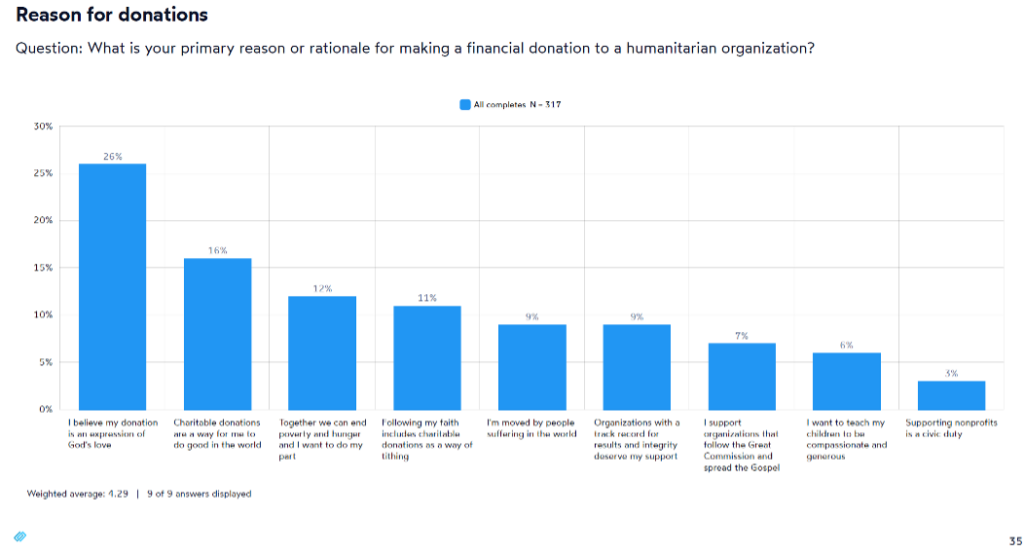About this Case Study
This case study provides an example for non-profit organizations seeking to refine their brand strategy and strengthen donor relationships. If you are in the non-profit sector with a focus on donor engagement or brand management, this case study is for you.
This case study focused on identifying donor motivations, addressing donation barriers, and refining organizational messaging to better align with donor priorities.
Summary
Food For the Poor (FFTP), a non-profit organization providing critical food assistance in Latin America, sought to refine its brand strategy and better understand current donor sentiment. PositiveBrand, in collaboration with RKD, conducted a comprehensive survey using GroupSolver to uncover key insights into donor motivations, perceptions, and challenges. These findings are helping FFTP shape a more impactful and resonant brand strategy.
Here’s the Challenge
FFTP faced a need to strengthen its connection with donors by understanding what drives their charitable contributions and how FFTP’s messaging aligns with these motivations. Additionally, FFTP aimed to identify potential barriers to donations and opportunities to enhance trust and engagement with its donor base.
Here’s the Idea
PositiveBrand designed a research initiative leveraging GroupSolver to explore donor motivations and perceptions. The study assessed factors such as faith-based giving, emotional responses to global challenges, trust in humanitarian organizations, and logistical challenges in donating. The objective was to provide actionable insights that could guide FFTP in refining its messaging and donor engagement strategies.
Here’s the Execution
We conducted a survey with a diverse pool of respondents, focusing on:
- Primary reasons for donating to humanitarian causes.
- Perceived alignment of FFTP’s mission with donor priorities.
- Challenges donors face when making charitable contributions.
- Key qualities that donors value in a humanitarian organization, such as trustworthiness and transparency.
The survey uncovered that faith-based motivations, such as expressing God’s love and tithing, were pivotal for many donors. Emotional factors, such as being moved by global suffering, also played a significant role, alongside a strong emphasis on organizational integrity and efficacy.

Here’s the Positive Outcome
The research revealed that 26% of respondents identified expressing God’s love as their primary motivation for donating, followed by 16% who viewed charitable donations as a way to do good in the world. Additionally, 9% of respondents cited being moved by people suffering in the world, while another 9% prioritized organizations with a strong track record of results and integrity. These insights are helping FFTP refine its messaging to highlight its alignment with faith-driven values while showcasing transparency and impact to strengthen donor trust.
Applications to Business Objectives
The findings have equipped FFTP with the insights needed to refine its brand messaging and donor engagement strategies. By emphasizing faith-driven motivations and showcasing transparency and impact, FFTP is poised to strengthen its connection with existing donors and appeal to new supporters. This strategic alignment enhances its ability to sustain and grow its vital humanitarian efforts.